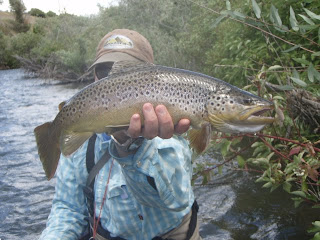Thread: White Orvis G
Materials: 4" barred rabbit strip, ice dubbing, 6" piece Crystal Trilobal Hackle, Red Bead, 4" piece of 7x tippet.
Tools: bobbin, scissors, whip finish tool
This is a sick fall trout streamer or steelhead fly. It is like a traditional zonker, but it has more underbody movement and flash from the crystal hackle, and a bead that looks like an egg. This fly can be dead drifted trough a run below spawning fish, swinging across the river, or stripping it in. This is a newer pattern that I had developed but it will be one of the most used streamer patterns in my box. The colors that I have fished and that worked well are pink/purple/white, Black/purple, and orange/green/pink.
 |
| Step 2: at the back of the hook shank, tie in the strip of rabbit fur. Tie it in so there is a tag end going towards the eye of the hook (this tag end will be pulled over the top later) |
 |
| Step 3: tie in the strip of crystal hackle underneath the rabbit strip. |
 |
| Step 4: twist dubbing onto the thread and wrap the dubbing up the hook shank towards the eye to give the fly some body/thickness. |
 |
| Step 6: create a small, tight head behind the bead. Whip finish and apply head cement. |

















































